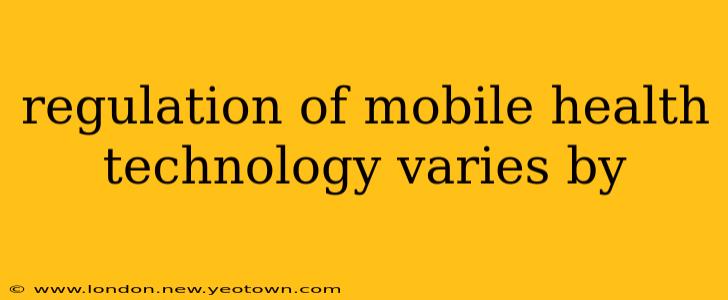The Wild West of Wellness: How Mobile Health Tech Regulation Varies by Country
The world of mobile health (mHealth) technology is booming. From fitness trackers counting our steps to apps reminding us to take medication, these tools are transforming how we manage our health. But this rapid growth has outpaced the development of consistent global regulation, creating a complex landscape where the rules governing mHealth apps and devices vary wildly depending on your location. This isn't just a matter of differing privacy laws; it touches on everything from data security to the very definition of what constitutes a "medical device."
Imagine this: you download a popular sleep-tracking app. In one country, it’s treated as a simple wellness tool, requiring minimal regulatory oversight. In another, the same app might be classified as a medical device, subjected to rigorous testing and approval processes before it can be marketed. This disparity creates a challenging environment for both developers and consumers.
How Does Mobile Health Tech Regulation Vary by Country?
This question is at the heart of the matter, and the answer is nuanced. There’s no single, unified global framework. Instead, we find a patchwork of national and regional regulations, often shaped by unique historical contexts, healthcare systems, and technological capabilities.
Some countries, such as the United States, have a complex regulatory environment with different agencies overseeing different aspects of mHealth. The Food and Drug Administration (FDA) regulates medical devices, while the Federal Trade Commission (FTC) focuses on consumer protection and advertising. This can lead to overlapping jurisdictions and ambiguities about which agency has authority over a particular app or device.
In contrast, the European Union has a more centralized approach with the Medical Device Regulation (MDR) setting standards for all medical devices, including those integrated into mobile apps. This provides a clearer regulatory pathway but can also be more stringent and costly for developers.
Other countries have less developed regulatory frameworks, which can create opportunities for innovation but also raise concerns about consumer safety and data protection.
What are the Key Regulatory Considerations for mHealth Apps?
Several key factors influence how mHealth apps are regulated:
-
Intended Use: This is arguably the most crucial aspect. An app that simply tracks steps is likely to face different regulatory scrutiny than an app that diagnoses medical conditions or dispenses medical advice.
-
Data Security and Privacy: With mHealth apps collecting sensitive personal health data, robust security measures and adherence to privacy regulations like HIPAA (in the US) or GDPR (in the EU) are paramount.
-
Accuracy and Reliability: If an app claims to provide accurate medical information or measurements, regulators will expect evidence to support these claims.
-
Marketing and Advertising: Claims made about the app's capabilities must be truthful and substantiated, avoiding misleading or deceptive advertising practices.
What are the different types of Mobile Health Technology?
The range of mHealth technologies is vast, adding further complexity to the regulatory landscape. We can categorize them broadly as:
-
Fitness trackers and wearables: These devices typically collect data on activity levels, sleep patterns, and heart rate. Regulation varies depending on whether they make medical claims.
-
Medical apps: These apps can be used for a wide variety of purposes, including medication reminders, symptom tracking, and telehealth consultations. Their regulation depends heavily on their intended use.
-
Telehealth platforms: These platforms allow for remote consultations with healthcare providers, and their regulation is often tied to the licensing and practice standards of healthcare professionals.
How can I find out more about the regulations in my country?
Navigating the mHealth regulatory landscape requires diligence. The best approach is to consult the relevant health authorities in your specific country or region. Look for websites of agencies that oversee medical devices, data privacy, and consumer protection.
The mHealth revolution is reshaping healthcare, but a clear and consistent regulatory framework is crucial to ensure safety, innovation, and patient trust. As technology continues to evolve, we can expect the regulatory landscape to become even more dynamic. The journey toward a unified, globally accepted approach to mHealth regulation is still underway, but the destination – a safer and more effective healthcare system – is worth the effort.

